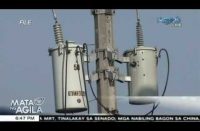QUEZON CITY, Jan. 12 – The Department of Social Welfare and Development (DSWD) is set to participate in the launch of convergence programs to combat child labor today, January 12, in Quezon City. The launch is dubbed “Makiisa #1MBatangMalaya: One with Children in ending child labor”.
The aim is to raise public awareness on the problem of child labor and to encourage action against. DSWD Secretary Judy M. Taguiwalo said that to end child labor, comprehensive actions must be done to help the parents of children who are compelled to help augment their families’ meager incomes by engaging in hazardous work.
“There are already ongoing efforts to help parents to secure gainful and sustainable employment, and these efforts should be complemented with programs to help their children,” she said.
“Because of widespread and deep-seated poverty in the Philippines, so many children are forced to forego their childhood and become workers in factories, mines, plantations so they can earn pittance wages they can give to their parents. We should all work together to bring an end to child labor and help children recover their childhood,” she said.
Various government agencies as well as private civil society organizations (CSOs) have developed their own programs to expose and combat child labor. Among these are the following:
- Convening Actors to Reduce child labor and improve working conditions in the ASGM Gold Mining (CARING-Gold) project of the International Labor Organization (ILO) and BanToxics;
- and the DSWD’s own Module on Child Labor for the Family Development Sessions of the Pantawid Pamilyang Pilipino Program (4Ps).
Concerning the last, the 4Ps has a reach of about 4 million households from the poorest families of the country, who are often forced to involve their children in work to augment the family income. The 4Ps helps families to send their children to school through its conditionality on education.
Being in school, however, is not an assurance that children will not engage in child labor. The child labor module will be part of the Family Development Sessions (FDS) to raise community awareness in child labor and the role of families to prevent or end child labor, especially its worst forms. SHIELD This January 12, the DSWD will launch its SHIELD Project.
SHIELD stands for Strategic Help Desks for Information, Livelihood and other Development Interventions against Child Labor. It is a model of intervention developed by DSWD Social Technology Bureau to combat child labor. It will strengthen efforts at the local level, which will include helpdesks and a local registry on child labor for referral and convergence of support services.
SHIELD will focus on areas with high incidence of child labor as priority to create an impact and make services more available to children and their families. Interventions will be based on data from the Child Labor Local Registry.
Target clientele will be children engaged in Worst Forms of Child Labor (WFCL); their families and communities in the pilot areas.
Three target areas have been chosen:
- deep-sea fishing communities in Catanuan, Quezon in Region IV-A;
- mining and quarrying communities in Labor, Paracale and Jose Panganiban, Camarines Norte in Region V;
- and, commercial agriculture areas in Kananga and Ormoc in Region VIII.
The chosen project components are the Child Labor Local Registry; Barangay Help Desk on Child Labor; and Advocacy and Capability Building. End child labor, return children to schools Apart from the ILO and BanToxics, the DSWD is also working with the Ecumenical Institute for Labor Education and Research Inc. (EILER).
EILER implements the “Bata Balik-Eskwela: Community-Based Approach in Combating Child Labor in Hazardous Industries in Plantations Mining.” This is supported by the European Union and it operates in six areas in the country, two are mining communities in Camarines Norte and in Compostela Valley.
“As documented with EILER, notwithstanding the various laws and programs that aim to address child labor, many continue to work and work under the most hazardous conditions,” said Sec. Taguiwalo.
Child laborers are found in palm, sugarcane, banana plantations and they work as fruit gatherers, weeders, loaders, baggers, and other tasks. In mines, they fetch water, muck out gravel, carry sacks of rocks, and logs used to support the tunnels. Girls do not work in the mines, but do the laundry or cook for the miners.
Boys aged 15 to 17 but who look older are able to get work in the tunnels as miners. Younger boys aged 10 to 15 are commonly employed in auxiliary work – they fetch water, load wood, and do errands for the miners. They also serve as relievers when regular miners do not report for work.
Citing the EILER report, apart from the physical hazards and dangers that the children are exposed to, the children also face social hazards. In Compostela Valley, it has been documented that child laborers work for as long as 10 hours, and in extreme cases, 18 to 24 hours straight inside the tunnels. “It is a cause for outrage and grief that some of the child laborers are said to be forced to take illegal drugs so they can remain awake inside the tunnels. What these children of the mines have to suffer through to survive and help their families are the stuff of nightmares. We need to enforce the laws that criminalize child labor more stringently. We need to rescue these children and help them and their parents build more stable, not to mention safer lives. The children belong to school – we must help them be children and enjoy the rights that all children should enjoy in a just and compassionate society,” she said.
EILER conducted focus group discussions and interviews with 92 child laborers in different areas. Most of them were aged 11 to 17 years old, and for every 11-17 year old laborer, there is one child laborer below 10 years old. While there are children who experienced working as early as when they were five, most began to work at age 12. (11 to 17 year olds comprised 85% of the group; while 5 to 10 years old 15%) .
Most of the child laborers were at 6th grade level; those who left school comprised 76.1% while 23.9% still attended school. Of the 23.9% who still attended, 62% admitted that they frequently missed their classes.
Most (93.5%) cited lack of finances as the reason for not attending school; 66.3% said that they need to go to work;13% said that their schools were far from their homes. In the mines, half of the children interviewed receive lower than P100/day. When the mines do not make a profit because they were unable to mine enough gold, the children do not receive wages even if they worked continuously for a month. In plantations, children receive P130 to P150 a day.
Apart from the wages, child laborers do not receive any other benefits.
“EILER’s report and the other studies related to child report are only the tip of the iceberg. Child labor continues to be an important social concern that exposes the depth of poverty in the Philippines and the urgency of the need to address issues of social injustice and inequality that victimize the poor.
When even very young children are forced to work alongside their parents to feed the family, there is something seriously wrong in society. Our collective efforts are needed to help the poor empower themselves so they can help their own children and pull them out of hazardous work, “ she said (DSWD)







